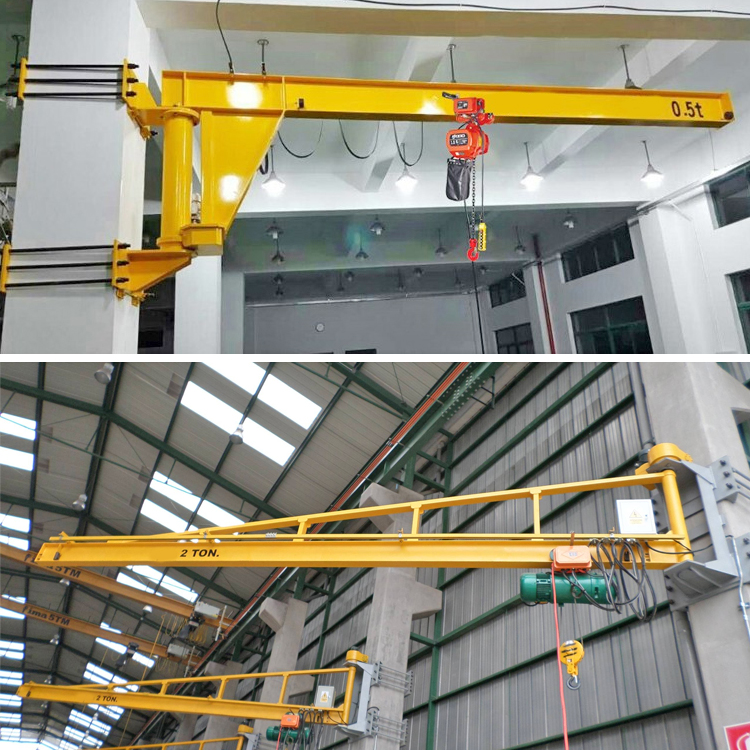What is a Jib Crane?
A jib crane is a type of crane that consists of a horizontal arm (the jib) that is fixed to a vertical post (the mast). The jib extends out from the mast and is used to lift and move materials in a specific area. Jib cranes are commonly used in warehouses, manufacturing facilities, and construction sites for their ability to provide localized lifting capabilities.
Types of Jib Cranes
Fixed Jib Crane:
This type has a stationary mast and is mounted on a concrete foundation. It is ideal for lifting loads in a specific area without the need for mobility.
Portable Jib Crane:
These cranes are designed to be moved easily from one location to another. They are often mounted on wheels or have a lightweight design for easy transport.
Wall-Mounted Jib Crane:
This type is attached to a wall or column, allowing it to extend outwards. It is useful for maximizing space in a facility and is often used in conjunction with other lifting equipment.
Articulating Jib Crane:
This crane features a jointed arm that can pivot at multiple points, allowing for greater flexibility in lifting and moving loads in tight spaces.
Freestanding Jib Crane:
These cranes are self-supporting and do not require any external support. They can be placed anywhere in a facility and are often used for heavy lifting.
Components of a Jib Crane
Mast:
The vertical support structure that holds the jib and provides stability.
Jib Arm:
The horizontal arm that extends from the mast and is used to lift and move loads.
Hoist:
The mechanism (manual or electric) used to lift and lower loads. It is typically mounted on the jib arm.
Base:
The foundation or support structure that anchors the mast, ensuring stability during operation.
Rotation Mechanism:
This allows the jib to rotate around the mast, providing a wider range of motion for lifting and moving loads.
Controls:
The system used to operate the hoist and control the movement of the jib crane, which can be manual or powered.
Uses of Jib Cranes
Manufacturing: Jib cranes are commonly used in factories for assembly lines, allowing workers to lift and position heavy components easily.
Warehousing: They are used to move goods and materials within warehouses, facilitating efficient storage and retrieval.
Construction: Jib cranes are employed on construction sites to lift materials to various heights and locations.
Maintenance: In maintenance shops, jib cranes assist in lifting heavy machinery or equipment for repairs.
Shipping and Receiving: They are used in loading docks to lift and move cargo onto and off of trucks or shipping containers.
Conclusion
Jib cranes are versatile and efficient lifting solutions that enhance productivity in various industries. Their different types and configurations allow them to be tailored to specific lifting needs, making them an essential tool in many operational settings.

Post time: Dec-27-2024







